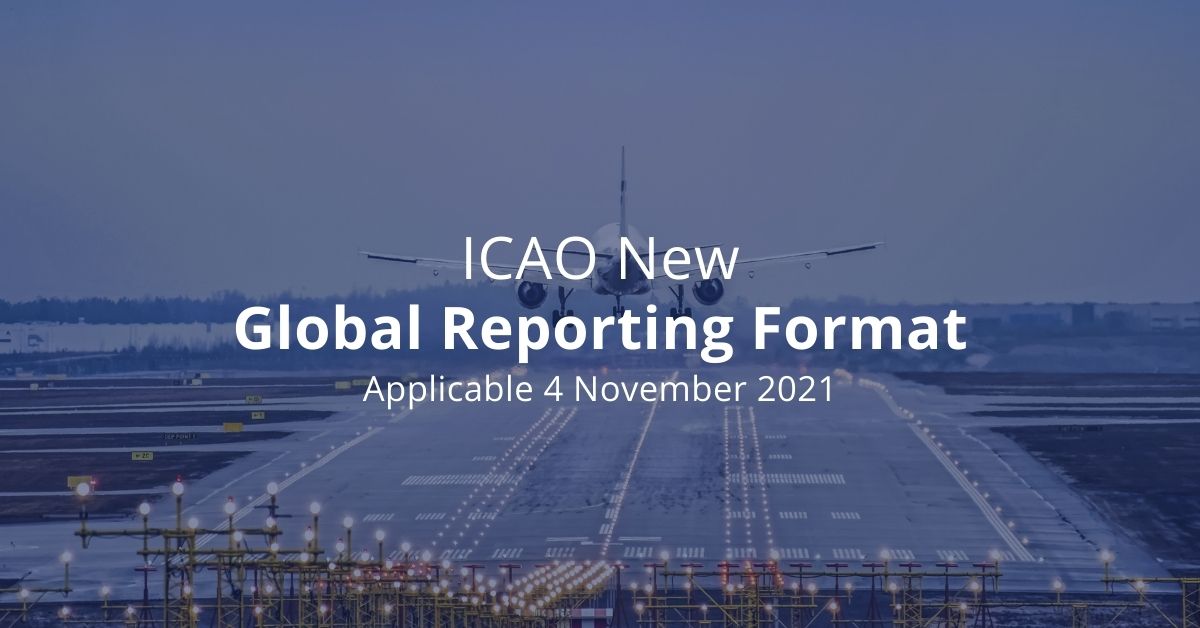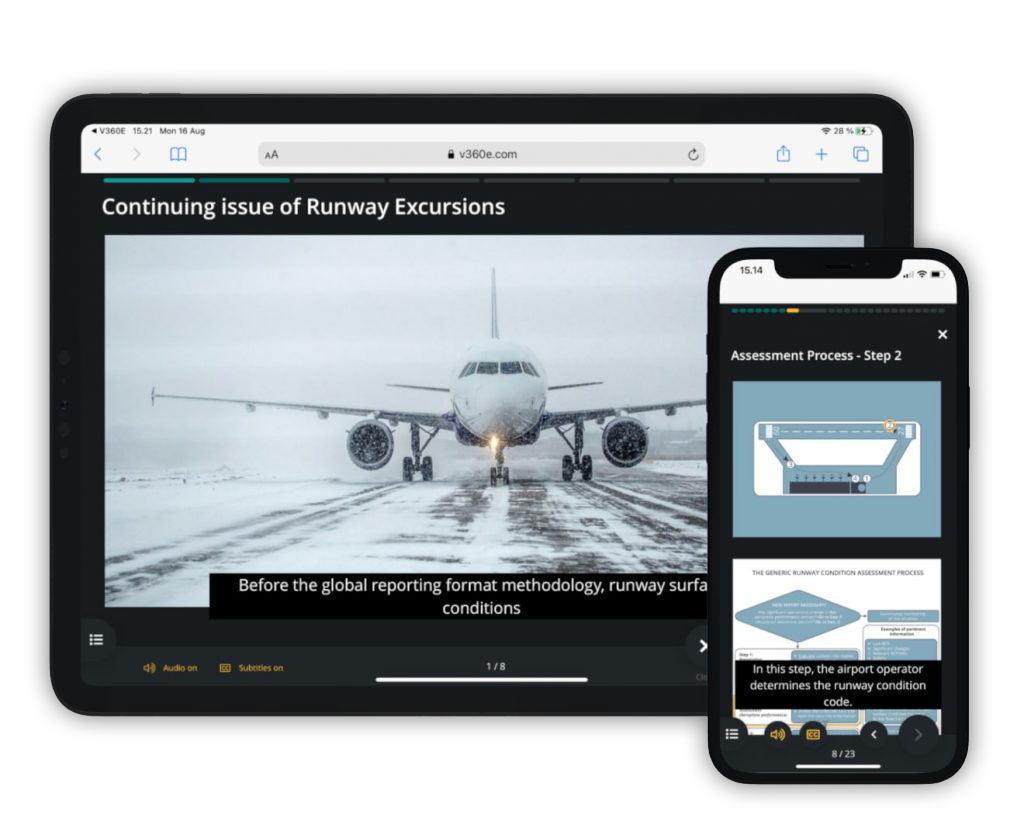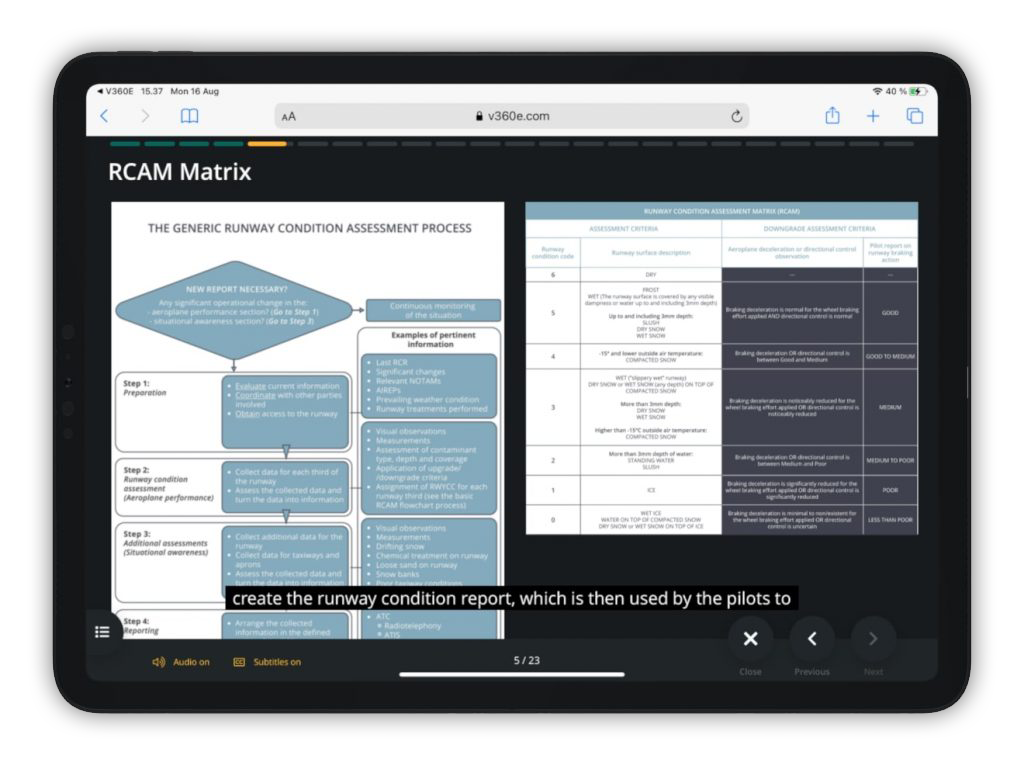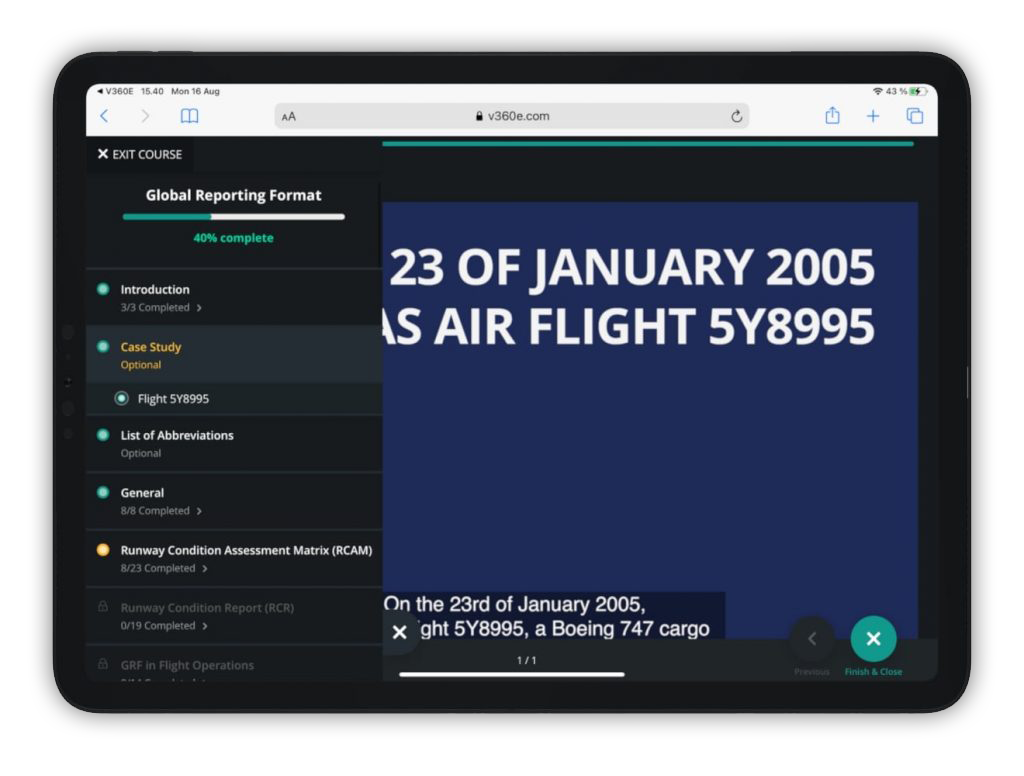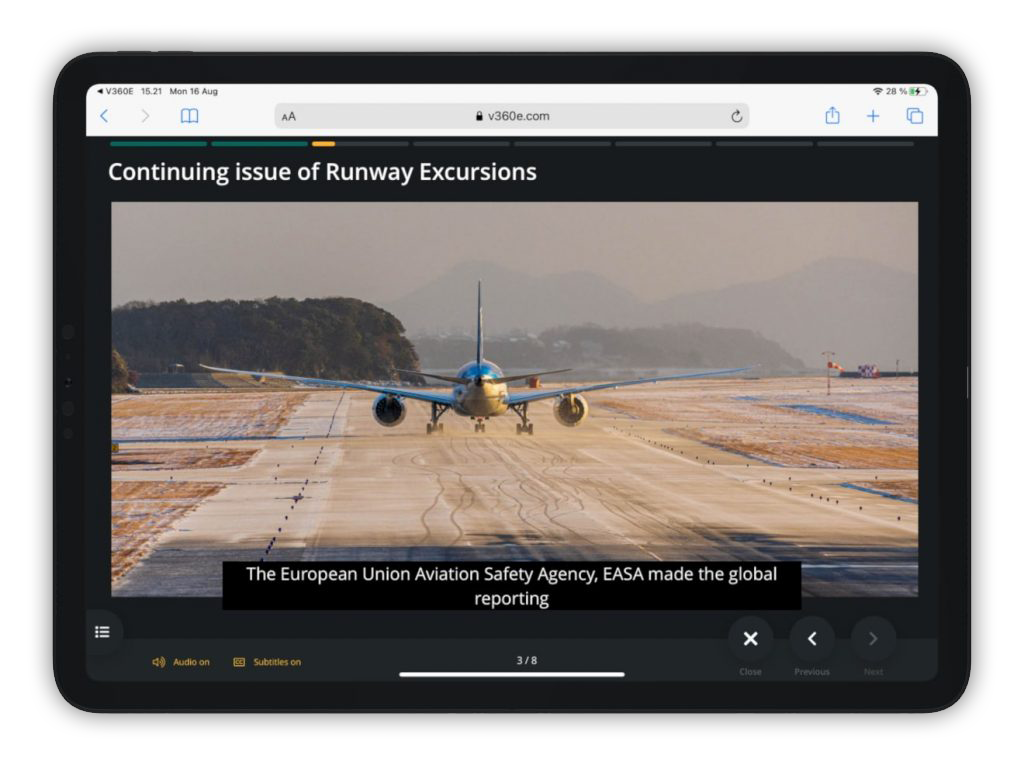What is the new Global Reporting Format?
In 2020, the International Civil Aviation Organization (ICAO) introduced the new Global Reporting Format (GRF) for Runway Surface Conditions. The new Global Reporting Format was introduced through the ICAO EUR DOC 041, “Guidance on the Issuance of SNOWTAM.” However, due to challenges connected to the COVID-19 pandemic, ICAO delayed the applicability date of the new GRF.
As the industry starts recovering from the pandemic, a new date – 4th of November 2021 – has been set as the applicability date for the new Global Reporting System.
The European Union Aviation Safety Agency (EASA) made the global reporting format concept effective in August 2021 to accommodate the northern countries, where winter comes earlier than the date proposed by ICAO.
Are you looking for the new Global Reporting Format course?
All airport operations, flight crew, ATC and AIS staff must be familiar and trained for the new GRF before the 4th of November 2021. Deadline for EASA member states is on the 12th of August 2021.
Why did ICAO develop the new Global Reporting Format?
The main objective of the Global Reporting Format is to reduce runway excursions and to improve the safety of airport operations.
Runway excursions are the most common incidents related to runway safety. The majority of runway excursions occur when the runway is contaminated by water, ice, frost or snow.

2015-2019 Accident End State Distribution, Source: IATA Safety Report 2019, published in April 2020
Previously, the runway surface conditions had been reported using several different reporting methods around the world. These mainly included depth of runway contamination and airplane braking action.
Using mixed reporting methods on runway contamination often caused confusion and misunderstandings between the reporter and flight crew. Confusion and misunderstandings made accidents related to runway excursions one of the top safety risks in aviation.
Accidents related to runway excursions accounted for 25% of all accidents during the last five years (2015-2019), resulting in the second highest percentage of fatal accidents (11%) and 55 deaths. The Runway Excursion accident category represented 32% of all accidents in 2019 and included two fatal accidents with three fatalities.
Source: IATA Safety Report 2019, published in April 2020
In 2006, ICAO conducted a study to understand the underlying reasons for the problem of runway excursions. In the study, ICAO found that the lack of harmonization in the reporting of runway conditions, different communication methods and lack of training were amongst the factors that increased the likelihood of a runway excursion.
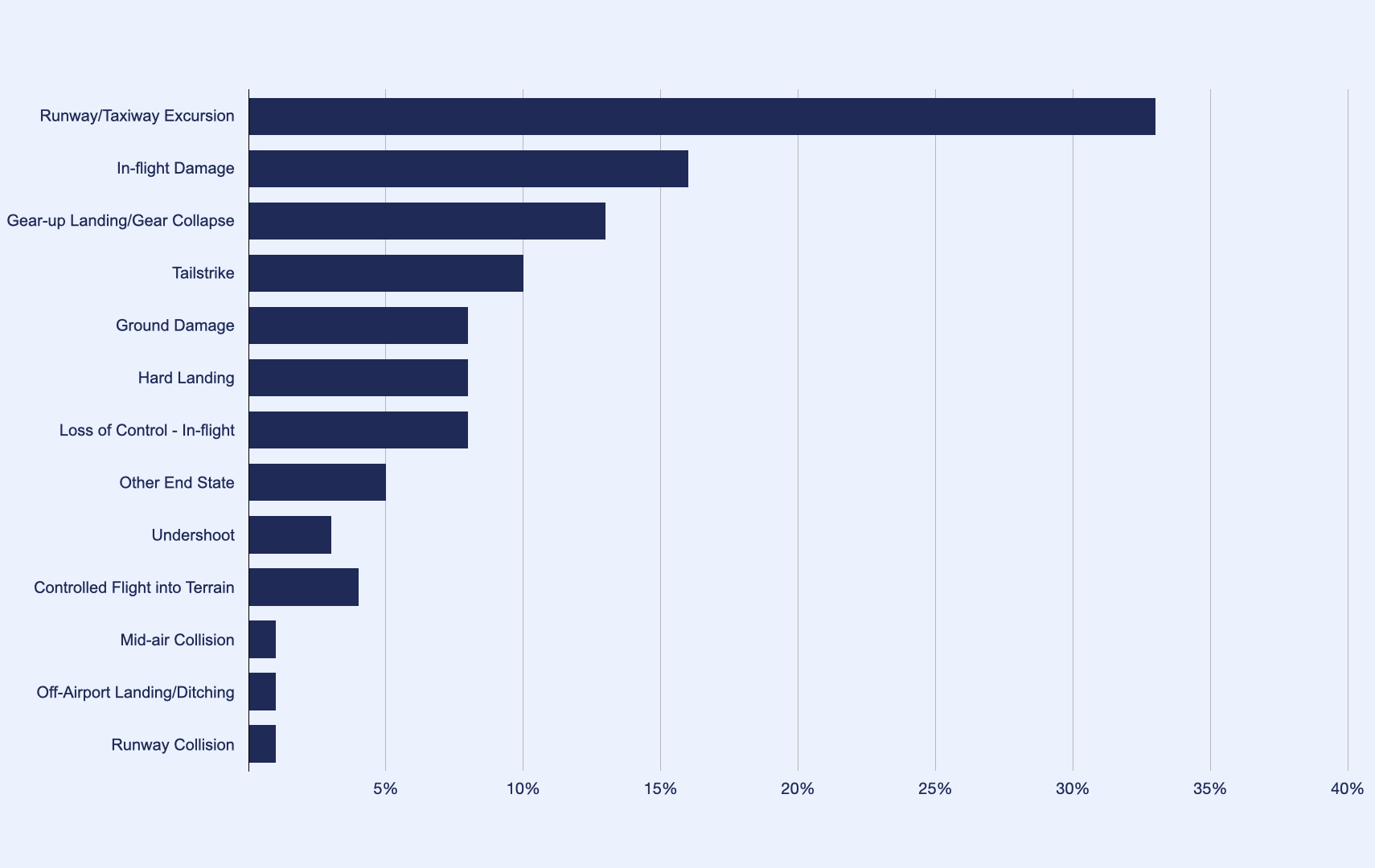
Accident Category Distribution (2019), Source: IATA Safety Report 2019, published in April 2020
To mitigate the risk of runway excursions, ICAO developed the new Global Reporting Format (GRF) for assessing and reporting runway surface conditions. The new methodology creates a harmonized assessment and reporting method that will improve flight crew assessment of take-off and landing performance.
With the new GRF, ICAO aims to address the shortfalls in the accuracy and timeliness of runway assessments and its associated reporting methods by aerodromes.
Further, the GRF mitigates the gap between the friction values measured by friction measurement equipment and the actual aircraft performance, which has proven unreliable and confusing for pilots at times.
The GRF is based on assessing runway conditions by trained professionals and reporting and feedback on the conditions in a globally standardized format. This results in a more comprehensive runway condition report that consists of two sections.
The first section of the report is the airplane performance section covering runway conditions for performance calculations. The second section of the report is the situational awareness section, which covers the surface conditions of taxiways, runways, and aprons.
Are you looking for the new Global Reporting Format course?
All airport operations, flight crew, ATC and AIS staff must be familiar and trained for the new GRF before the 4th of November 2021.
Deadline for EASA member states is on the 12th of August 2021.
CLICK HERE to get more information.
